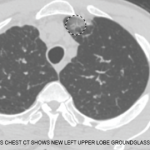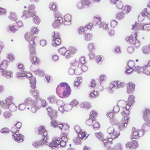
Vasculitis expert and former editor of The Rheumatologist, Dr. Philip Seo gives us his picks for the 10 most important abstracts in ANCA-associated vasculitis to come out of ACR Convergence 2023.
SAN DIEGO—Anti-neutrophilic cytoplasmic antibody (ANCA) associated vasculitis, including granulomatosis with polyangiitis (GPA), microscopic polyangiitis (MPA) and eosinophilic granulomatosis with polyangiitis (EGPA), continues to be an area of active investigation. Multiple studies on ANCA-associated vasculitis were presented at ACR Convergence 2023. Here, we highlight important points from 10 of these studies.
1. Use of the PEXIVAS Regimen in GPA & MPA
Abstract 0725: Nagle et al.
The administration of high-dose glucocorticoids for the treatment of severe forms of ANCA-associated vasculitis has long been established as part of the standard of care. PEXIVAS challenged this dogma by demonstrating that a reduced-dose glucocorticoid regimen was non-inferior to a standard-dose regimen with respect to death or risk of progression to end-stage kidney disease.2 However, it has been less clear whether a reduced-dose glucocorticoid regimen is adequate for all patients with ANCA-associated vasculitis.
This retrospective study addressed this question by examining the outcomes of 234 patients with ANCA-associated vasculitis, 54% of whom received a reduced-dose glucocorticoid regimen. The study included 93 patients with MPA and 148 patients with GPA. The primary end point was a composite that included death, end-stage kidney disease and disease progression before first achieving remission.
In multivariate analysis, patients who were treated with a reduced-dose glucocorticoid regimen were more likely to achieve the primary end point (hazard ratio 1.72; 95% confidence interval [CI] 1.08–2.74). However, the reduced-dose glucocorticoid regimen was not associated with an increased risk of death or progression to end-stage kidney disease (HR 1.62; 95% CI: 0.82–3.19). There was no significant difference in serious infections at one year (20.6% vs. 15.7%, P=0.427).
In subgroup analysis of patients treated with the reduced-dose glucocorticoid regimen, the primary end point was more likely to be achieved by patients treated with rituximab and patients with a baseline serum creatinine of 3.4 mg/dL (or greater). Patients who were treated with both rituximab and a reduced-dose glucocorticoid regimen had an increased risk of death or progression to end-stage kidney disease (HR 2.42; 95% CI: 1.04–5.66).
The use of a reduced-dose glucocorticoid regimen has been an important advance in the management of ANCA-associated vasculitis. However, this latest analysis implies that there may be a tradeoff, particularly among patients who receive remission-induction with rituximab. The association between the reduced-dose glucocorticoid regimen and the risk of death or end-stage kidney disease among patients treated with rituximab is particularly concerning, given that rituximab now dominates as the treatment of choice in both the U.S. and Europe.



